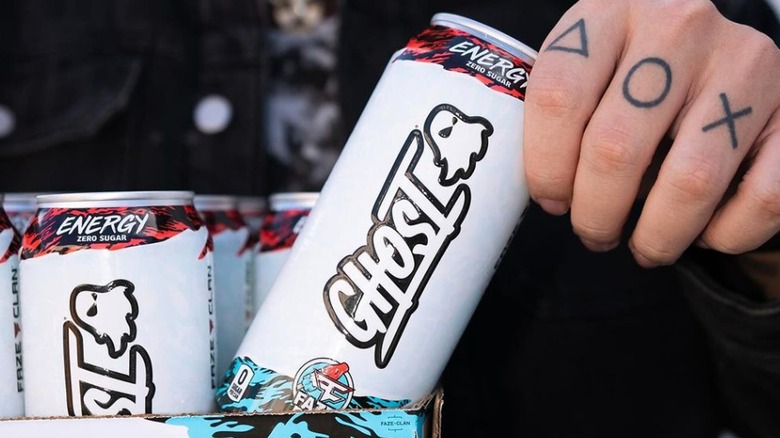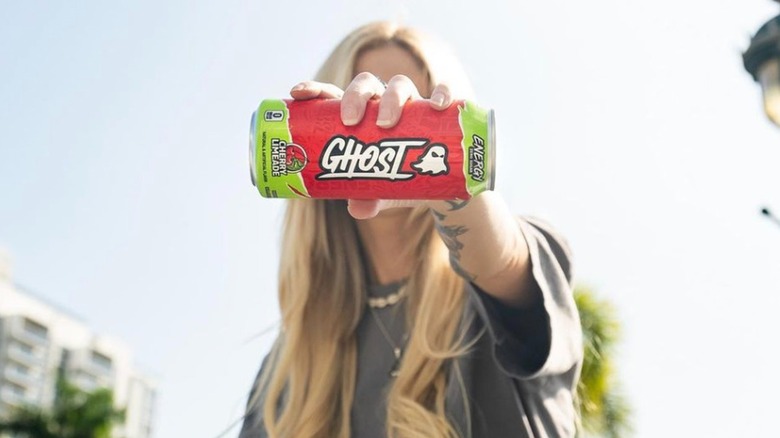How Much Caffeine Is In Ghost Energy Drinks?
Love 'em or hate 'em, energy drinks are likely here to stay. Assuming there are no major marketplace upheavals, it's fair to say that they've earned enduring spots in supermarket drink aisles as well as on freeway mega-signs, in Super Bowl advertisements, and at countless festivals and sports events. A substantial appeal of energy drinks is the pick-me-up feeling they bring after guzzling a can or bottle, and there's a really good reason for the exhilarating boost. Energy drinks contain varying amounts of caffeine, which revs up the system in similar ways to coffee or black tea.
Ghost Energy, a collaboration with Anheuser-Busch that launched in 2021, holds considerable sway in the world of energy beverages. Prior to its venture with AB, the Ghost lifestyle brand sold energy products and supplements claiming full disclosure of contents. As such, it's easy to discover the caffeine content in a standard 16-ounce can of Ghost Energy, which comes in 12 flavors including Orange Cream, Sour Watermelon, Tropical Mango, Cherry Limeade, and Faze Up and Faze Pop.
The brand even sells joint collaborative flavors with the likes of Sour Patch Kids and Warheads. All versions of Ghost Energy drinks have zero sugar, but they do offer a considerable jolt of caffeine — 200 milligrams per can, to be exact. That sounds like a lot, but for the sake of comparison, a similar 16-ounce cup of Starbucks brewed coffee contains more, with 310 milligrams. When placed side by side with other energy drinks, caffeine content differs — in more ways than one.
Ghost Energy features natural caffeine
Compared to other energy drinks, Ghost generally has more caffeine per ounce, but not always. Monster Energy and Rockstar Original tuck only 160 milligrams of caffeine into a 16-ounce container, while A Shoc and Bang buzz with a higher 300 milligrams. Redline Xtreme comes in 8-ounce cans, so the 316 milligrams of caffeine per can is actually double that for a comparable 16 ounces, totaling a whopping 632 milligrams.
The amount of caffeine offers a good comparison between energy drinks, but volume isn't the only thing to consider. The type of caffeine matters as well, meaning its origin. A quick glance at the nutrition label on a can of Ghost Energy reveals the term "natural caffeine." We generally think of caffeine as being derived from coffee or cacao beans, tea leaves, or guarana, which are all natural sources of caffeine. But most energy drinks on the market instead use a synthetic version of caffeine, created in laboratories at a much lower cost than extracting it from sources found in nature.
Does that make Ghost Energy — which derives its caffeine from coffee beans — better for you than other synthetically caffeinated energy drinks? That's debatable overall, but generally speaking, natural caffeine does have benefits that synthetic versions do not. When derived from natural sources, caffeine comes with beneficial nutrients and compounds, including several B vitamins and minerals such as magnesium, manganese, potassium, and phosphorus. Natural caffeine also contains fewer harmful compounds than those found in synthetic caffeine.

